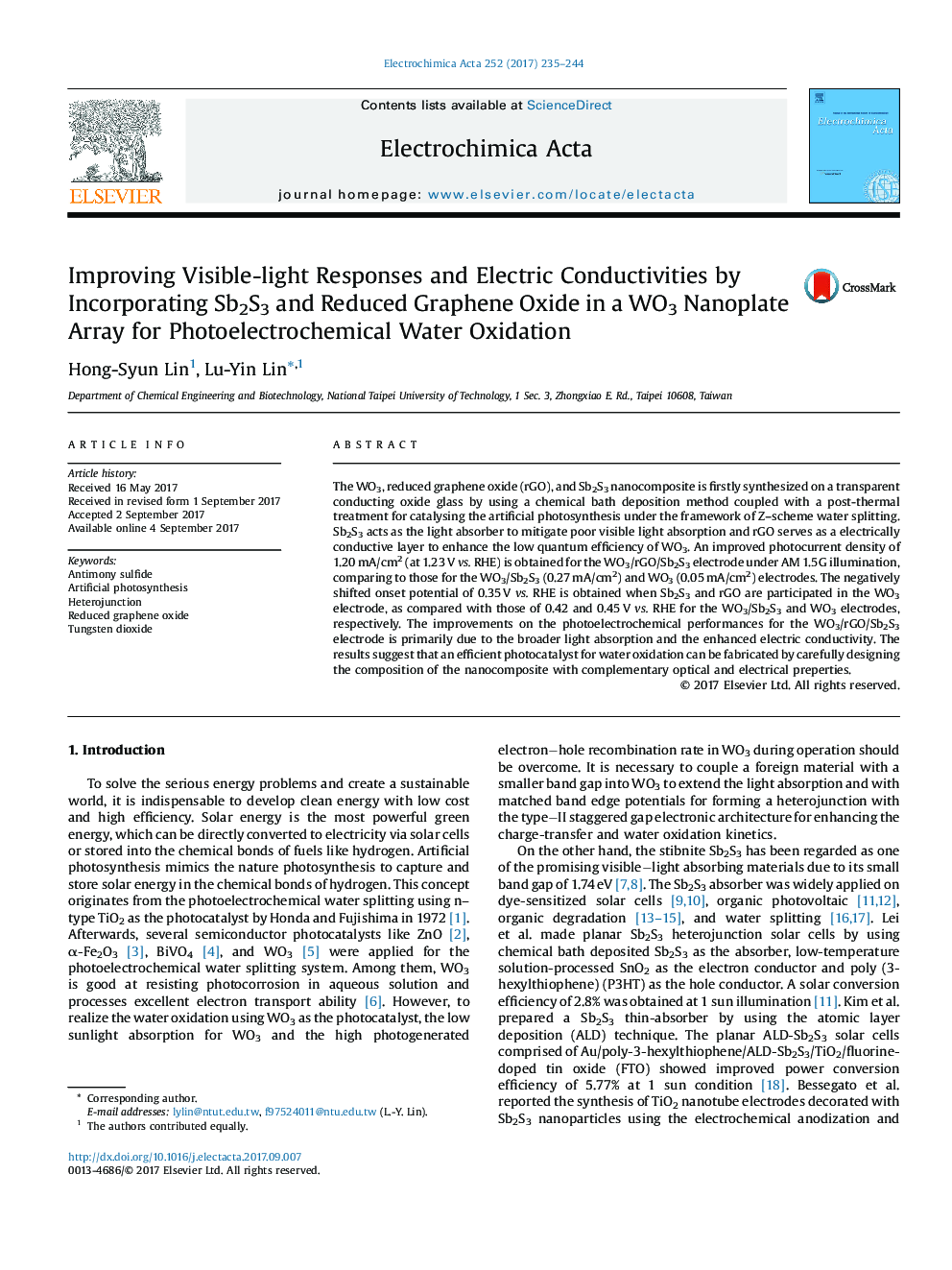| Article ID | Journal | Published Year | Pages | File Type |
|---|---|---|---|---|
| 6470265 | Electrochimica Acta | 2017 | 10 Pages |
â¢A WO3/reduced graphene oxide/Sb2S3 electrode is made via chemical bath deposition.â¢The three-component electrode is used for photocatalysing water oxidation.â¢Broader light absorptions and enhanced electric conductivities are achieved.â¢Three-component electrode performs better than single and double-components ones.â¢A photocurrent density of 1.20 mA cm-2 (1.23 V vs. RHE) is got for the electrode.
The WO3, reduced graphene oxide (rGO), and Sb2S3 nanocomposite is firstly synthesized on a transparent conducting oxide glass by using a chemical bath deposition method coupled with a post-thermal treatment for catalysing the artificial photosynthesis under the framework of Z-scheme water splitting. Sb2S3 acts as the light absorber to mitigate poor visible light absorption and rGO serves as a electrically conductive layer to enhance the low quantum efficiency of WO3. An improved photocurrent density of 1.20Â mA/cm2 (at 1.23Â V vs. RHE) is obtained for the WO3/rGO/Sb2S3 electrode under AM 1.5G illumination, comparing to those for the WO3/Sb2S3 (0.27Â mA/cm2) and WO3 (0.05Â mA/cm2) electrodes. The negatively shifted onset potential of 0.35Â V vs. RHE is obtained when Sb2S3 and rGO are participated in the WO3 electrode, as compared with those of 0.42 and 0.45Â V vs. RHE for the WO3/Sb2S3 and WO3 electrodes, respectively. The improvements on the photoelectrochemical performances for the WO3/rGO/Sb2S3 electrode is primarily due to the broader light absorption and the enhanced electric conductivity. The results suggest that an efficient photocatalyst for water oxidation can be fabricated by carefully designing the composition of the nanocomposite with complementary optical and electrical preperties.
Graphical abstractDownload high-res image (219KB)Download full-size image
